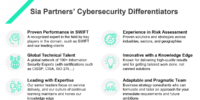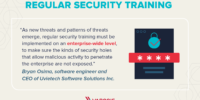Welcome to the era of cybersecurity where the traditional perimeter-based security model is giving way to a more robust and dynamic approach – Zero Trust. In the face of evolving cyber threats, adopting a Zero Trust model is a strategic move to fortify your organization’s security posture. Let’s explore some quick tips for navigating the path to Zero Trust transformation and bolstering your cybersecurity defenses! ️
1. Rethink Assumptions: Trust No One, Verify Everyone
The foundational principle of Zero Trust is to question trust assumptions. Adopt the mindset of “Trust No One, Verify Everyone.” In a Zero Trust model, trust is never assumed based on location or user identity. Every user, device, and application must be verified before gaining access to sensitive resources. This paradigm shift forms the core of Zero Trust transformation.
2. Implement Multi-Factor Authentication (MFA)
Enhance authentication security by implementing Multi-Factor Authentication (MFA). MFA adds an extra layer of protection by requiring users to provide multiple forms of identification. This mitigates the risk of unauthorized access even if credentials are compromised. MFA is a crucial component in the Zero Trust framework to ensure robust user authentication.
3. Micro-Segmentation: Divide and Conquer
Adopt a micro-segmentation strategy to divide your network into smaller, isolated segments. By segmenting your network, you limit lateral movement for potential attackers. Each segment operates as a separate entity, and access between segments is strictly controlled. Micro-segmentation reduces the attack surface and minimizes the impact of security breaches.
4. Continuous Monitoring and Analytics
Continuous monitoring and analytics play a pivotal role in Zero Trust. Implement tools that provide real-time visibility into network activities, user behavior, and potential threats. Analyze this data to detect anomalies and take immediate action. The proactive nature of continuous monitoring aligns with the Zero Trust principle of detecting and responding to security incidents promptly.
5. Embrace the Principle of Least Privilege
Adhere to the principle of least privilege by providing users and devices with only the minimum access necessary to perform their tasks. Avoid granting unnecessary permissions, reducing the potential impact of security incidents. This principle aligns with the Zero Trust philosophy of minimizing the attack surface and securing resources through granular access controls.
6. Encrypt Data in Transit and at Rest
Ensure end-to-end encryption for data in transit and at rest. Encrypting sensitive data adds an extra layer of protection, making it unreadable even if intercepted. Implement robust encryption protocols to safeguard data throughout its lifecycle. Encryption is a fundamental aspect of Zero Trust, ensuring data confidentiality and integrity.
7. Foster a Culture of Security Awareness
Instill a culture of security awareness within your organization. Educate employees about the importance of cybersecurity, the Zero Trust model, and the role each individual plays in maintaining a secure environment. A well-informed workforce is a crucial line of defense against social engineering attacks and contributes to the overall success of your Zero Trust transformation.
Embarking on a Zero Trust transformation is a strategic move towards building a resilient cybersecurity framework. By rethinking assumptions, implementing MFA, adopting micro-segmentation, embracing continuous monitoring, applying the principle of least privilege, encrypting data, and fostering a culture of security awareness, your organization can strengthen its defenses against modern cyber threats. Stay vigilant, stay secure!








